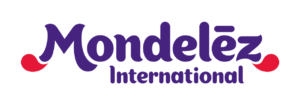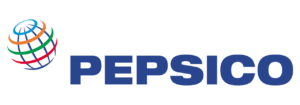As Amazon Prime Day 2025 approaches, brands are rethinking their Prime Day content strategy to stand out in a hyper-competitive marketplace. From crafting mobile-first PDPs to optimizing A+ content and building conversion-ready Amazon Brand Stores, this guide explores everything you need to master content optimization and win visibility where it matters most.
Introduction
Amazon Prime Day USA 2025 is scheduled to take place from July 8 to July 11, 2025, while Amazon Prime Day India 2025 is scheduled for July 12-14. This year, the event is going to be huge and more strategic yet critical than ever before, giving brands a longer runway to attract, convert, and retain customers across Amazon’s rapidly growing ecosystem.
Before moving forward, let’s first deep dive into what went into Prime Day 2024’s history across both locations.
While Prime Day USA, 2024 generated $14.2 billion in global sales, contributing a significant share. Over 300 million items were sold, and Prime members saved $2.5 billion—fueling an 11% year-over-year sales boost from 2023. The most popular format in 2024 was Prime Exclusive Discounts (PED), as the percentage of brands that used them doubled from the previous year.
On the other hand, Amazon India recorded:
- A 24% YoY increase in Prime member shoppers
- Over 24,000 orders per minute at peak
- Record sales across categories like personal care, electronics, and groceries
(Source: Amazon India, 2024)
Prime Day is not just about offering discounts—it’s about being discoverable, relevant, and retail-ready at scale. Your success hinges not only on performance campaigns but also on high-impact content that converts interest into action.
Table of Contents
Why Content Optimization Is Your Prime Day Growth Lever
Today, content has become the new conversion layer—where PDPs, product titles, A+ content, and visual assets influence buyer confidence long before checkout.
Here’s what top-performing brands have realized:
- Amazon shoppers rely heavily on visual and textual cues to assess product quality
- SEO-aligned content significantly increases organic discoverability
- Retail readiness gaps—like poor images or missing keywords—can waste ad spend and reduce ROAS
Prime Day amplifies this effect. With millions of products competing in parallel ad auctions, the brand that wins is the one that is consistent, keyword-optimized, and conversion-friendly—across every ASIN.
Pre-Prime Day Content Strategy: Building the Foundation for Visibility & Conversions
For brands that win on Prime Day, the real game doesn’t start on Day 1 of the sale—it begins weeks in advance, in the crucial pre-event phase. This is where smart content planning and data-driven optimization create the launchpad for success.
Your product listings are your digital storefront, and just like a physical store prepares windows and aisles before a festival rush, your Amazon content must be polished, aligned, and discoverable.

1. Inventory-Content Sync: Eliminate Mismatches Early
The first mistake many brands make? Building beautiful PDPs for SKUs that go out of stock on Day 2.
Instead, start with a data-first prioritization:
- Focus on top-converting ASINs from last Prime Day and Q1/Q2 2025
- Identify new launches or seasonal products that need support
- Audit inventory levels and sync stock projections with content investments
- Flag ASINs with stock risk and pause content updates there until cleared
Planning to optimize already existing content, this guide might come in handy: How to Expedite Your Organic Ranking with Content Optimisation
Looking to build product descriptions from scratch (the type of content that sells), Go through this comprehensive guide for an enhanced understanding : eCommerce content marketing – product descriptions that sell
2. Keyword Intelligence: Blend SEO + Amazon Intent
This isn’t just about stuffing keywords. It’s about understanding:
- What your ideal customer is searching
- How Amazon Auto-Suggests and Search Query Performance data shape product visibility
2025 Optimization Stack:
- Use a mix of high-volume + long-tail keywords in titles, bullet points, backend terms
- Analyze retail search trends
- Don’t ignore mobile keywords (shorter queries, touch-UX phrasing)
- Align search terms with paid ad targeting keywords to reinforce ranking
Example:
Title that doesn’t convert: Organic Herbal Shampoo – 250ml
Retail-Ready Title: BrandX Organic Herbal Shampoo 250 ml | Sulfate-Free | Hair Fall Control | With Aloe & Neem Extracts (Make sure to keep it under 200 characters.)
3. PDP Storytelling: From Features to Confidence
In 2025, content is no longer about listing features—it’s about creating confidence to buy. Storytelling is the way to go!
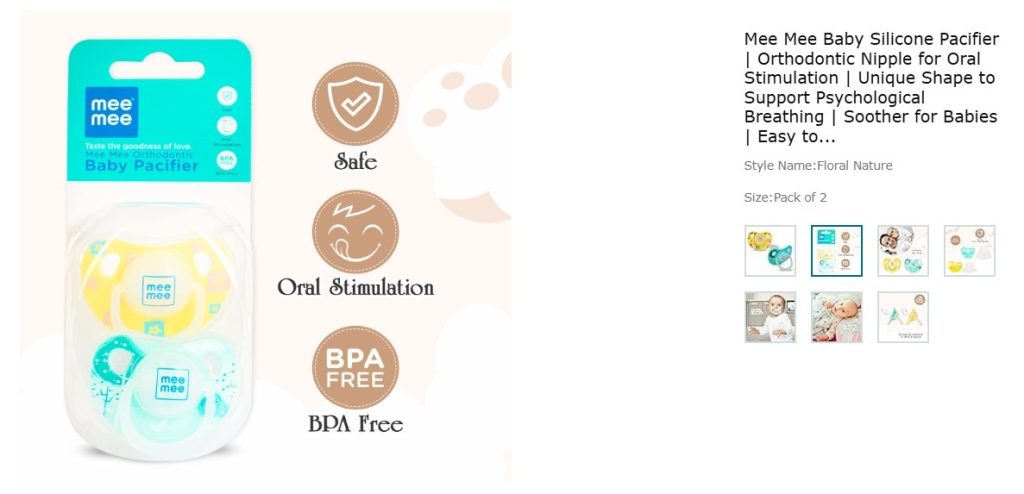
Craft content that:
- Anticipates shopper questions (“Will this fit my routine?”, “Is it safe for kids?”)
- Builds narrative around lifestyle or problems solved
- Adds rich formatting: bullet points, line breaks, A+ modules, comparison tables
Structure your PDPs as:
Problem → Solution → Features → Benefits → Trust signals → Offer
This human-first approach outperforms feature dumps every time.
4. Visual Strategy: Mobile-First, Emotion-Driven
With more than 70% of Prime Day traffic coming via mobile, image strategy has to go beyond specs:
- Use lifestyle images that show context (“How it fits in my kitchen / looks in my hand”)
- Incorporate Augmented Reality and 360-degree rotation features
- Highlight value props visually (icons, text overlays)
- Design your image gallery like a carousel narrative:
- Hero image → Use Case → Ingredients/Materials → Benefits → How-to → Guarantee
Format specs:
- 1000x1000px minimum (zoom-enabled)
- JPEG or PNG
- No watermarks, logos, or backgrounds other than white for hero image
5. Prime-Exclusive Hooks & Content CTAs
Use this pre-phase to start building momentum:
- Apply Prime Exclusive Discounts
- Add “Only on Prime Day” text overlays on secondary images
- Mention urgency or exclusivity in product descriptions
- Set up early social posts and email headers previewing Prime deals with embedded links
The pre-Prime Day content strategy isn’t just prep work—it’s your competitive edge.
Start early, align your creative, data, and inventory workflows, and transform every PDP into a 24/7 conversion engine—so when shoppers start searching, they don’t just find you… they trust you.
During Prime Day: Real-Time Content Execution & Conversion Optimization
Prime Day is live. Your ads are running. Your deals are live. Your audience is searching, clicking, comparing, and deciding. This is not the time to go on autopilot. The brands that convert best during Prime Day are those that treat their PDPs like live digital assets—adjusted, optimized, and aligned with real-time shopper behavior.
Here’s how to elevate your content execution during the event itself.
1. Real-Time PDP Monitoring: Treat Content as Dynamic, Not Static
You wouldn’t run a performance campaign without monitoring impressions and CTR. Why treat your PDP content any differently?
Track these metrics live:
- PDP traffic and bounce rate
- Ad-driven click-throughs vs. organic sessions
- ASINs with high views but low conversions → content mismatch alert
What to do:
- Rotate images based on performance
- Update secondary bullets to reflect trending questions or real-time FAQs
- Adjust A+ modules to highlight fastest-moving variants or bundle offers
Dropping in here a quick A+ comprehensive guide to pace your strategy: What is Amazon A+ Content: A Complete Guide for Beginners
2. Prioritize Mobile-First Experience
70%+ of Prime Day traffic in 2024 came via mobile. If your product pages don’t look great on a 6-inch screen, they’re leaking sales.
Quick wins:
- Front-load the most persuasive keywords and benefits in bullets
- Ensure mobile image rendering is high-res and text isn’t cut off
- Use infographics that compress value into 1–2 visual panels
- Eliminate any “desktop-only” language or formatting issues
Think like a mobile shopper: fast, visual, scroll-first, skimmable.
3. PDP + Ad Integration: Speak the Same Language
During Prime Day, your ads and PDPs must work as a single conversion engine.
Here’s what top-performing brands do:
- Mirror ad copy headlines in the product title or bullet point #1
- Match A+ content banners with image overlays used in Sponsored Brands
- Use retargeting-friendly phrases: “Limited time Prime Day deal,” “Only today.”
Why it matters: Consistency improves click-to-cart rates and keeps cognitive friction low, especially when shoppers are comparing 4–5 listings in one session.
4. Run Micro-Experiments Mid-Event
Prime Day is short—but not too short for optimization.
Quick A/B options:
- Swap order of bullet points (e.g., value-first vs feature-first)
- Test different first A+ content banners by ASIN
- Change overlay text to reflect urgency or scarcity
If you don’t have A/B tools, use different variations on similar SKUs and monitor performance shifts manually.
5. Activate Live Engagement & Social Proof
This is where content meets real-time credibility:
- Embed top-rated reviews or user-generated content in A+ modules
- Highlight “Most Gifted” or “Best Seller” badges visually
- Run social posts that link directly to PDPs during peak hours (12 PM, 6 PM, 9 PM)
Brands with live content + community integration convert significantly better than those running Prime Day in silos. During Prime Day, your product page is your storefront, sales team, and closer—all in one.
To win, you must treat content as dynamic, mobile-first, and fully synced with your ad strategy. Don’t just show up with good content—show up ready to adjust it for performance.
Post-Prime Day Content Strategy: Retention, Review Harvesting & Growth Looping
The final cart has been checked out, and the Prime Day buzz winds down—but your opportunity doesn’t. The post-event window is where brands transform short-term visibility into long-term retention and ad spend into sustainable loyalty.
This is where you complete the growth loop with content.
1. Feedback Loops: Turn Customers into Advocates
Amazon’s algorithm rewards trust signals like reviews and ratings. After Prime Day, you’ll see a massive wave of new customers—don’t lose the momentum.
Your post-event playbook:
- Trigger automated review requests
- Follow up with personalized messaging offering additional discounts for next purchase or product bundles
- Highlight positive feedback in A+ content modules or carousel images
- Respond publicly to 1–3 negative reviews to show credibility and ownership
Pro tip: Extract review keywords and integrate them back into bullet points and image overlays for future ranking boosts.
2. Optimize Best-Performing PDPs for Always-On Performance
Not all content performs equally during Prime Day—but your data can now tell you which ASINs, titles, and formats worked best.
Post-event actions:
- Identify PDPs with best conversion rate and longest session time
- Mirror winning content elements across similar SKUs
- Move high-converting titles and bullets into Q4 listings (Diwali, Black Friday, Festive Season)
- Split-test secondary image layouts from winning SKUs across your brand catalog
You’ve just finished your most valuable testing sprint—don’t let the insights go to waste.
3. Upgrade Amazon Brand Store for Long-Term Growth
Many Prime Day ads lead to brand stores, but brands forget to optimize this asset post-sale.
Here’s how to evolve your store:
- Turn your Prime Day landing page into a “Best of Prime” collection
- Highlight top-rated products, trending bundles, or new launches
- Add a “What’s New” carousel using updated copy and visuals
- Embed review quotes or customer use-case photos for social proof
Bonus Move: Promote your upgraded store in retargeting ads or via DSP campaigns.
Also Read: Refer to this complete Amazon brand store guide for an easy understanding.
4. Repurpose Content into Multi-Channel Assets
Repurposing goes a long way and prevents content fatigue. What works on PDPs can work on:
- Social creatives
- Product videos
- Email banners
- WhatsApp commerce catalogs
- Google Shopping feed overlays
Convert your highest-performing Prime Day creatives into cross-platform assets and drive ROI beyond Amazon.
5. Close the Loop with Insights + Internal Enablement
- Archive all creative variations, image tests, A+ content modules
- Document content formats vs conversion impact
- Use these insights to build a year-round content calendar
Prime Day might be over, but the content-driven growth opportunity has just begun.
Use the days and weeks after to retain customers, refine your listings, and build a content strategy that serves your brand all year long.
Because when your content keeps converting—even after the event—Prime Day becomes a platform, not just a promotion.
Moving forward, the blog features segments curated for different sets of audiences, i.e., India & USA, because one size does not fit all!
Retail Readiness: India Edition
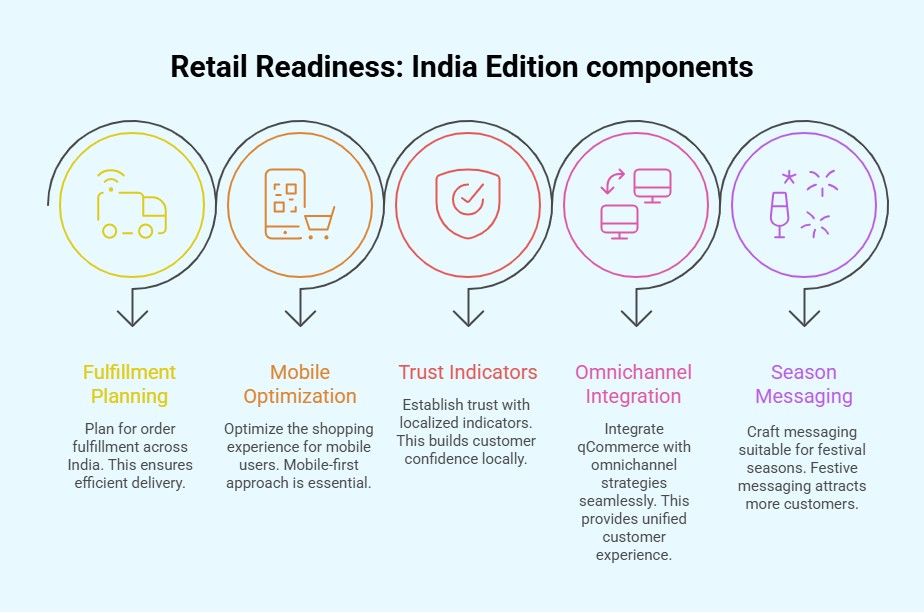
In India, Amazon Prime Day is more than just a flash sale—it’s a massive brand-building event, especially across Tier 2 and 3 cities, which accounted for 65%+ of SMB sales in 2024 (Amazon India).
To stay competitive in a high-volume, mobile-driven market, here’s what retail readiness must include:
1. Pan-India Fulfillment Planning
Ensure your ASINs are stocked across all major fulfillment centers. Delays in Tier 2/3 deliveries can lead to customer drop-offs and lower seller ratings.
2. Mobile-First Optimization
With over 80% of Indian Prime Day traffic via smartphones, make sure your PDPs are scroll-optimized. Use portrait-oriented lifestyle shots, front-load bullet points with key benefits, and reduce dense descriptions.
3. Localized Trust Indicators
Showcase elements that Indian shoppers relate to:
- “Dermatologically tested,” “Ayurvedic,” “Made in India” badges
- Highlight value like “Best under ₹999” or “Combo packs for families”
4. qCommerce + Omnichannel Integration
Even on Amazon, buyer behavior is influenced by the speed expectations of Blinkit and Zepto. Add phrases like “Get it tomorrow,” or “In stock – dispatches today” to your listings and ad creatives when eligible.
5. Festival-Season Friendly Messaging
Prime Day often marks the start of early festive shopping. Embed product use cases into Raksha Bandhan, Onam, or Independence Day campaigns where relevant.
Retail Readiness: USA Edition
For U.S.-based brands, Prime Day is a conversion war zone. With higher CPCs and customer expectations, your listings must meet Amazon’s full compliance and conversion-readiness benchmarks.
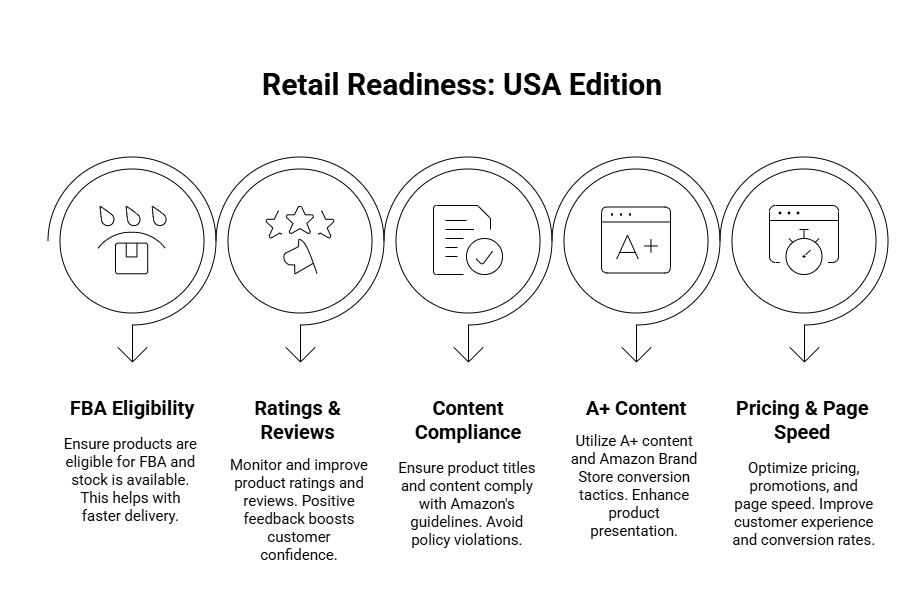
1. FBA Eligibility & Stock Availability
Ensure top SKUs are Prime-eligible, FBA-ready, and in stock across major warehouse zones. Use Amazon’s Inventory Performance Index (IPI) to prioritize replenishment.
2. Ratings & Reviews
Listings with fewer than 15–20 reviews and <4.0 ratings tend to underperform. Proactively drive early reviews weeks before Prime Day through Vine, post-purchase follow-ups, and retargeting.
3. Title & Content Compliance
Follow Amazon’s U.S. content rules to avoid suppression:
- 200-character max titles
- No emojis, all-caps, or promotional language
- Clear brand name, quantity, and variant structure
4. A+ Content & Amazon Brand Store Conversion Tactics
Use lifestyle imagery that reflects U.S. household norms, diversity, and daily use cases. Leverage comparison charts, usage visuals, and trust badges like “BPA-free,” “Clinically Tested,” or “Eco-Certified.”
5. Pricing, Promos & Page Speed
U.S. shoppers are comparison-driven. Ensure your pricing stands out, coupons are visible, and your page loads cleanly on both desktop and mobile.
Need help optimizing your top SKUs or building SKUs from scratch? Our team of certified experts offers best-in-class content & campaign management services across all the eCommerce & qCommerce marketplaces. Email us at info@paxcom.net
Amazon Prime Day 2025 FAQs
Start by prioritizing SKUs with strong ratings, healthy inventory, and seasonal relevance. Ensure each listing has a compelling title, search-optimized backend keywords, and a well-structured PDP. Focus on retail readiness, including Prime eligibility, strong reviews, and updated A+ content. The goal is to make each SKU discoverable, trustworthy, and ready to convert during high-traffic hours.
Think of A+ content as your visual pitch. Highlight features, usage occasions, or results through custom modules and branded graphics. For your Amazon Brand Store, curate Prime Day-specific collections like "Top Deals Under ₹999" or "Fast-Moving Favorites," and link these tiles directly to high-converting SKUs. A consistent story across PDPs and store pages increases time spent and improves conversion paths.
With more than 70% of shoppers browsing via smartphones, your content must deliver fast value. That means hero images that are clear and zoom-enabled, product titles that front-load benefits and keywords, and bullet points that deliver impact in the first two lines. Optimizing for mobile ensures your SKUs don’t get skipped in the scroll.
Use your bullet points to tell a benefits-first story, not just list features. Lead with a problem your product solves, then tie it to an emotional or seasonal outcome—like convenience, savings, or comfort. For example: “Nourishing hydration that lasts all day—perfect for monsoon-dry skin.” Strong bullet points don’t overwhelm; they persuade.
Standout listings do more than show up—they stop the scroll. Use Prime Day-exclusive deals and visual overlays like “Only on Prime Day” to grab attention. Infographic-style images showing results, before/after use, or trust-building icons (e.g., dermatologically tested, eco-friendly) can help differentiate your product in crowded search results.
Approach each SKU as a campaign. Pre-event, ensure listings are SEO-ready and visually optimized. During Prime Day, monitor traffic and conversion; make real-time updates if needed. Post-event, analyze what worked—reviews, conversion rates, or click-throughs—and use that data to improve your broader content strategy. Prime Day isn’t just a sale; it’s a content lab in real time.
From PDP audits and keyword integration to A+ content creation and mobile UX optimization, Paxcom provides complete SKU-level support. Whether you're managing 10 ASINs or 1,000, our experts help you deploy scalable, high-performance content that delivers measurable results across every Prime Day phase.






